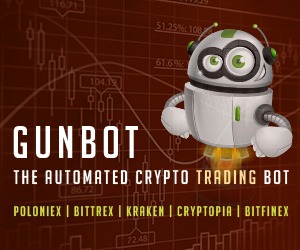Simply put, all of the information we have gathered thus far is combined into a transaction, and the only thing it needs are the signatures.
Gibson:
“Six: Now that the unsigned transaction is prepared, it is sent to every one of the nyms.”
The unsigned transaction is sent to all parties in the CoinJoin transaction, and then, as Gibson explained:
“Seven, each individual nym signs each input that belongs to them,” and “Eight, each nym sends back their valid signatures on their inputs.”
Everybody sends their signatures back to finalize the transaction, verifying their inputs equal the necessary amount for the transaction.
“Nine, the coordinator gathers all of the signatures from eight. When they have one valid signature for every input in the transaction, they can just insert them into the transaction, and make a fully-valid, signed transaction, and broadcast it.”
Once all signatures are collected by the coordinator, the transaction is broadcasted to the Bitcoin blockchain.
Notes On The Process
“Obviously crucial is that each nym carefully checks the full list of inputs and outputs, to make sure they are not being cheated: the output amounts are what they expect, and their inputs are what they expect,” explained Gibson. “Notice they don’t need to care about everyone else’s inputs and outputs, as long as they get back what they expect.”
As mentioned earlier, the signature should not be given if the output does not match your expected outcome. It is, at current, the responsibility of the involved party to make sure that the transaction lines up.
Now, we can all be forgiven for thinking that the process above sounds a bit heady. Innovation requires patience. Much like the original versions of the web that were largely read-only with horrible user interfaces, eventually we were able to evolve to Web 2.0. Regretfully, this technological innovation has become largely centralized, but it does allow us to see that the pain of founders can eventually be soothed with further innovation. This brings us to JoinMarket.
The Basics Of JoinMarket
Being multifaceted, we will briefly talk about just one of the applications JoinMarket currently runs.
“Joinmarket-Qt is a GUI application which allows users to create wallets and send coinjoins,” according to Bitcoin Wiki . “It is essentially a simple GUI bitcoin wallet with sendpayment and tumbler scripts wrapped inside.”
A GUI (graphical user interface) is just a way to make a webpage or program simple to use. Instead of seeing read-only code that no one can understand, or operating on a command line, which can prove difficult for new users, JoinMarket seeks to make the process of CoinJoin easier and more accessible.
As you can see, a lot of effort is being spent for this particular innovation, and there are other platforms working on this as well. As difficult as it may sound, it’s really quite easy comparatively, as long as all parties can agree on the output. But why is all of this effort being thrown at this particular problem?
Why Does CoinJoin Matter?
This is the exact question I asked Gibson, and he told me:
“[CoinJoin] is a technique to make it impossible for a person, looking at a transaction that you created (example: you are paying them for goods or services), to be able to deduce things about your money (how much you have; what its history is, etc.). This is a big advantage for your security.”
Bitcoin is always about privacy and making sure your funds are kept safe. At the core of every change that happens within Bitcoin, privacy and security remain supreme. Gibson went on to compare the process of CoinJoining with the legacy system:
“Compare with the legacy system: your recipient almost never sees any information about your money/account, except in certain edge cases, while your bank and the government that controls it, might be able to see everything (all history).”
CoinJoining is putting private ownership of your money back in your hands. With Schnorr signatures and signature aggregation in the future, you can interact with others looking to secure privacy, and help lower fees at the same time, all while no financial institutions or centralized governments have any control over your money. Gibson’s closing remarks on this process summarize the need for this innovation, and also the necessity of further innovation.
“A person can certainly try to look at the history of your money or how much you have, directly on the blockchain,” he said. “CoinJoin is one of a number of techniques that ‘makes it impossible’ (except, that is not entirely true, it tries to do that, but it is by no means perfect, so ‘impossible’ is not the right word).”
What Comes Next?
The answer depends on your time preference. In the short term, work can be done to close up the efficacy of CoinJoining to get us closer to that point of imperviousness. Privacy isn’t enough reason for widespread adoption of CoinJoining tactics, that requires other incentives, because some might not care as much about privacy and won’t do the extra leg work just to get there.
One interesting thought is cross-input signature aggregation (CISA ). On this, Gibson seems quite bullish. It’s worth noting that while this particular method can create incentives, it does not necessarily do so for private CoinJoins. While private CoinJoins will be incentivized, there will not be a requirement for private CoinJoins to achieve the savings in fees, meaning all CoinJoin transactions will be private.
On CISA, this was Gibson’s response:
“But we could go further: we could combine the signatures from all of the inputs in a transaction (even, say, 100 of them) into one single signature.”
Not only do we have fee savings in standard signature aggregation, but a further implementation of CISA could take those savings even further. Plus, we have yet to discuss how these changes affect the process on a detailed level. But those are discussions for other articles.
This is a guest post by Shawn Amick. Opinions expressed are entirely their own and do not necessarily reflect those of BTC Inc or Bitcoin Magazine.





